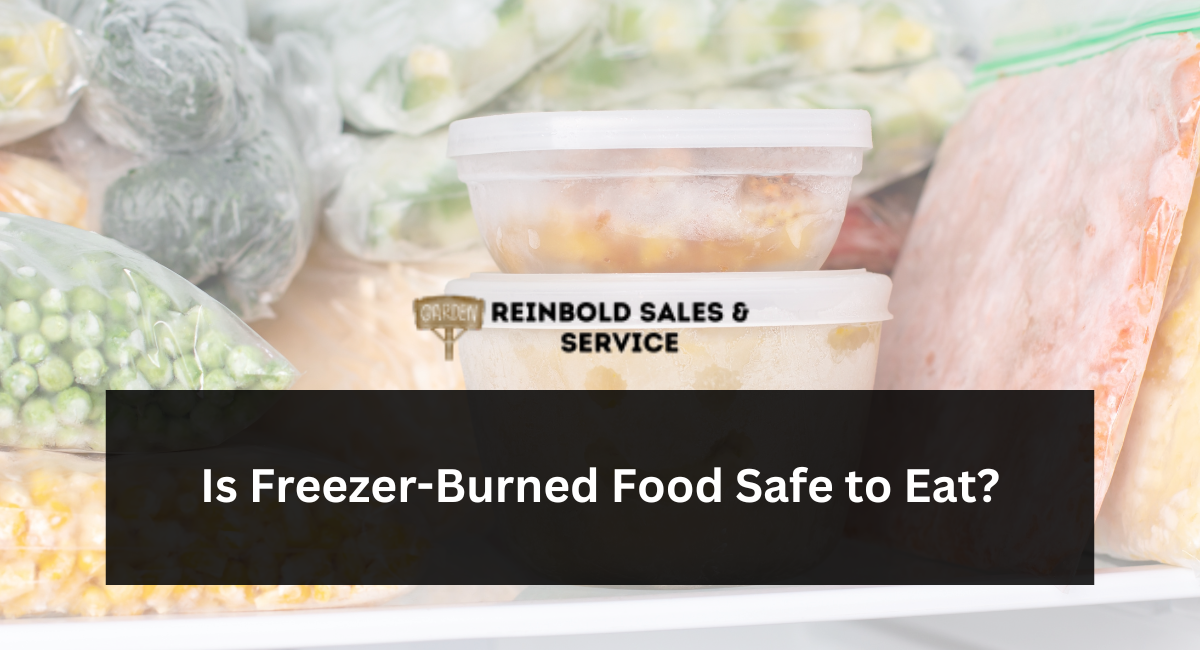We’ve all been there. You open the freezer, rummaging for a forgotten treasure, only to unearth a package with a grayish cast and icy crystals clinging to its surface. Freezer burn! It can be disheartening, especially if it’s an expensive cut of meat or a carefully prepared dish. But the bigger question arises: is freezer-burned food safe to eat, or should it be consigned to the compost bin?
The Science of Freezer Burn: Moisture Loss, Not Spoilage
The good news is that freezer burn is not a sign of spoilage. It’s a quality issue, not a safety one. Freezer burn occurs when moisture escapes from frozen food, causing ice crystals to form on the surface. This can happen due to several factors, including:
- Fluctuations in temperature: Frequent opening and closing of the freezer door can cause temperature fluctuations, leading to moisture loss.
- Improper packaging: Food not tightly wrapped or stored in airtight containers is more susceptible to freezer burn.
- Air pockets: Air pockets within the packaging can accelerate moisture loss and freezer burn.
The Impact of Freezer Burn: Taste and Texture, Not Safety
While the icy crystals and grayish discoloration might be visually unappealing, freezer burn doesn’t affect the safety of the food. The freezing process itself halts bacterial growth, the main culprit behind food spoilage. So, rest assured, freezer-burned food won’t make you sick.
However, freezer burn does take a toll on the quality of your food. The loss of moisture can lead to:
- Toughness: Meat and seafood can become tough and dry when freezer-burned.
- Loss of flavor: The flavor and aroma of frozen food can diminish due to moisture loss.
- Change in texture: Fruits and vegetables might become rubbery or mushy when freezer-burned.
Salvaging Freezer-Burned Food: Making the Most of Your Frozen Treasures
Just because your food has freezer burn doesn’t mean it’s a complete loss. Here are some tips to salvage freezer-burned food and still enjoy a delicious meal:
- Trim away the affected areas: Simply cut off the freezer-burned portions, discarding the discolored and icy parts. The remaining food should still be safe to consume.
- Rehydrating: For certain foods like fruits and vegetables, rehydration can improve texture. Soaking freezer-burned fruits in a little water or juice can revive their texture and flavor.
- Marinades and Sauces: For meats and seafood, marinades and sauces can help add moisture and flavor back into freezer-burned food. Marinate your meat for a longer time than usual to allow for deeper penetration of flavor and moisture.
- Slow Cooking Methods: Cooking methods like slow cooking, braising, or stewing are ideal for freezer-burned meats. These methods utilize a moist environment, helping to tenderize the meat and mask any dryness caused by freezer burn.
- Get Creative!: Think outside the box! Freezer-burned fruits and vegetables might not be ideal for eating raw, but they can be repurposed in smoothies, baked goods, or soups. Don’t throw away perfectly good food; get creative and find ways to use it up!
Preventing Freezer Burn: Strategies for Long-Lasting Frozen Goodness
An ounce of prevention is worth a pound of cure (or a freezer full of freezer-burned food)! Here are some tips to prevent freezer burn in the first place:
- Proper Packaging: Invest in airtight containers or freezer bags specifically designed for frozen food storage. These containers minimize air exposure, preventing moisture loss.
- Double Wrap: For extra protection, consider double wrapping your food. Wrap the food tightly in plastic wrap, then place it inside a freezer bag or airtight container.
- Remove Air Pockets: When using freezer bags, squeeze out as much air as possible before sealing. You can also use a straw to suck out any remaining air before sealing the bag.
- Portion Control: Freeze food in portion sizes you’ll use within a reasonable timeframe. This reduces the number of times you open and close the freezer, minimizing temperature fluctuations.
- Label Everything: Label your frozen food with the date it was frozen. This helps you keep track of how long it’s been stored and ensures you use the oldest items first.
The Bottom Line: Safety First, Quality Matters
Freezer burn is a common occurrence, but it shouldn’t be cause for alarm. Freezer-burned food is safe to eat, but the quality might be compromised. By understanding the science behind freezer burn and implementing preventive measures, you can minimize its occurrence and enjoy the benefits of frozen food for longer.
Remember, prioritize safety first, but with a little know-how, you can also salvage freezer-burned food and avoid unnecessary waste. So, the next time you discover a freezer-burned treasure, assess the situation, employ some creative culinary solutions, and enjoy a delicious (and budget-friendly!) meal!
Beyond Freezer Burn: Additional Tips for Optimal Frozen Food Storage
Here are some additional tips to ensure optimal frozen food storage and quality:
- Defrost Properly: Thaw frozen food safely in the refrigerator, under cold running water, or in the microwave using the defrost setting. Never thaw food at room temperature, as this creates a breeding ground for bacteria.
- Maintain Proper Freezer Temperature: Keep your freezer temperature at 0°F (-18°C) or lower. This optimal temperature inhibits bacterial growth and helps maintain food quality.
- First In, First Out (FIFO): Rotate your frozen food stock regularly. Use the oldest items first to prevent freezer burn and ensure you enjoy your food at its peak quality.
- Limit Refrozen Food: While refreezing previously thawed food is generally safe if done properly, it can affect the texture and flavor. It’s best to thaw only the amount of food you plan to consume.
Conclusion
By following these simple tips, you can extend the shelf life of your frozen food, minimize freezer burn, and enjoy delicious and nutritious frozen meals for months to come.
So, embrace the convenience and versatility of frozen food, while keeping food safety and quality at the forefront of your freezer management strategy!
